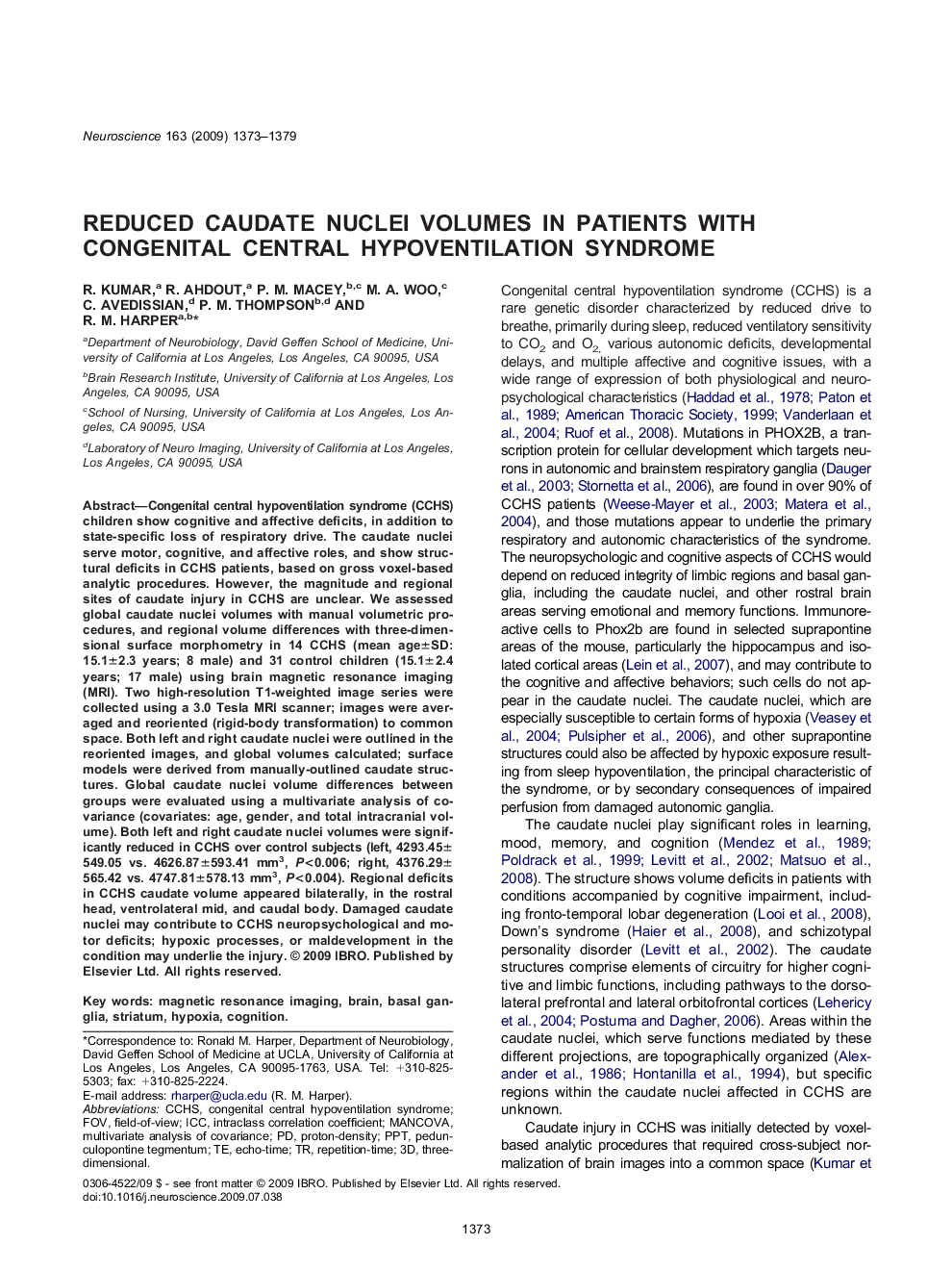| Article ID | Journal | Published Year | Pages | File Type |
|---|---|---|---|---|
| 6277739 | Neuroscience | 2009 | 7 Pages |
Abstract
Congenital central hypoventilation syndrome (CCHS) children show cognitive and affective deficits, in addition to state-specific loss of respiratory drive. The caudate nuclei serve motor, cognitive, and affective roles, and show structural deficits in CCHS patients, based on gross voxel-based analytic procedures. However, the magnitude and regional sites of caudate injury in CCHS are unclear. We assessed global caudate nuclei volumes with manual volumetric procedures, and regional volume differences with three-dimensional surface morphometry in 14 CCHS (mean age±SD: 15.1±2.3 years; 8 male) and 31 control children (15.1±2.4 years; 17 male) using brain magnetic resonance imaging (MRI). Two high-resolution T1-weighted image series were collected using a 3.0 Tesla MRI scanner; images were averaged and reoriented (rigid-body transformation) to common space. Both left and right caudate nuclei were outlined in the reoriented images, and global volumes calculated; surface models were derived from manually-outlined caudate structures. Global caudate nuclei volume differences between groups were evaluated using a multivariate analysis of covariance (covariates: age, gender, and total intracranial volume). Both left and right caudate nuclei volumes were significantly reduced in CCHS over control subjects (left, 4293.45±549.05 vs. 4626.87±593.41 mm3, P<0.006; right, 4376.29±565.42 vs. 4747.81±578.13 mm3, P<0.004). Regional deficits in CCHS caudate volume appeared bilaterally, in the rostral head, ventrolateral mid, and caudal body. Damaged caudate nuclei may contribute to CCHS neuropsychological and motor deficits; hypoxic processes, or maldevelopment in the condition may underlie the injury.
Keywords
Related Topics
Life Sciences
Neuroscience
Neuroscience (General)
Authors
R. Kumar, R. Ahdout, P.M. Macey, M.A. Woo, C. Avedissian, P.M. Thompson, R.M. Harper,
